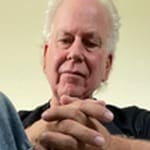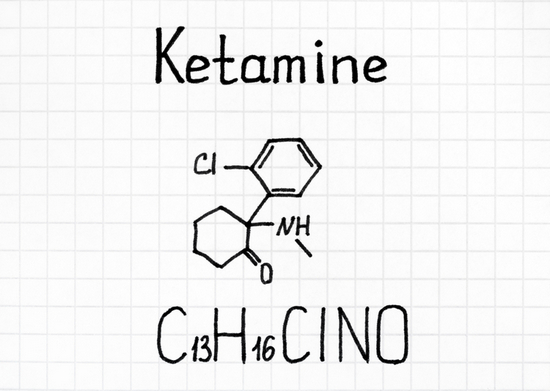In emotional agony, Rick pounds his fist on the table and says, “Of all the gin joints in all the towns in all the world, she walks into mine.” With a few modifications, he could be talking about struggling with an emotional or mental health issue.
He likened ketamine infusion to a reset button on a computer, but for the brain. Basically, a chemical reboot…
If you’re a movie hound, you likely know that Rick is Humphrey Bogart’s character in Casablanca. He brilliantly delivers one of the greatest lines in film history.
I’m thinking most of us could identify with the modified version. And one of the biggest reasons is having to turn to unconventional interventions for relief – because the conventional ones don’t work.
Chipur reader and associate, Hannah, shares her experience with “unconventional” ketamine infusion therapy. She delivers a ton of valuable information and I’m pleased to have it on board.
Okay, Hannah’s story…
Ketamine and me
The late-night local news was my initial source of information about the use of the drug ketamine to treat the darkest and most stubborn of mental depressions.
I’m talking about depression reserved for monoamine oxidase inhibitors (MAOIs) and maybe electroconvulsive therapy (ECT}, Depression that swaddles you in a Pig-Pen cloud of enveloping despair from which everything is overwhelming and nothing feels right.
A “different” depression
“…a directionally challenged mode of sweaty chaos.”
My depression was different, which led me to believe I was not a candidate for ketamine treatment. Instead of arcing up the pinnacle on a bell curve of perceived madness, every day I moped along in a directionally challenged mode of sweaty chaos.
The little momentum I mustered to tackle the day at the ripe rapture of afternoon subsequently petered out in front of the TV by the 6:00 evening news.
My dreaded bedtime loomed like an oppressive parent to steer my terror into the Hell of chronic insomnia that had plagued me since childhood, now intensified by the latest very grown-up events – settling the estates of two recently deceased parents and a host of other nuisances too boring to mention.
In sum, finishing one task and moving on to the next became insurmountable to me.
The journey begins
There are better resources than me to research the drug ketamine for depression, like Chipur, which is where I started. But I had already called the clinic referenced in the news story and made an appointment before I started reading.
Intake
The intake was easy; I spoke with a registered nurse and told her how I had heard of the clinic. Then I launched into my long history of depression, hitting on the high notes of the (many) medications I had unsuccessfully tried and discussing my recent episode in the clutches of pain management.
By the way, I had quit cold-turkey out of harsh inconvenience (four months to get an appointment as a new patient, even with a referral).
What I realized and expressed to the nurse during that first call was that I had been medicated with low doses of controlled drugs for years, and while I functioned great on that protocol, I had stopped it months ago,
Is my depression “big” enough?
I had not been able to get back to basics. I was exhausted, in pain, unable to focus, and feeling hopeless. I had been diagnosed with serotonin syndrome, so I could not take the “normal” drugs to treat depression.
Ketamine by infusion seemed like a logical solution to my depression, which I perceived as one step removed from melancholy. I wondered, was my depression “big” enough for ketamine treatment?
The ketamine clinic nurse was compassionate and understanding. She offered that I may talk with one of the doctors before visiting the clinic, but her thorough explanation of the process and the intended outcome was good enough for me. I decided to get in front of the doctor and take it from there.
I compiled a stack of relevant medical chart notes to take to my appointment, focused on those that detailed medications I had tried and stumbled into the clinic with no idea of how to present my case with clarity. I didn’t need to. They got it.
Time to see the doc
I filled out paperwork. It seemed basic by comparison to my understanding of this seemingly dangerous “Club Drug” ketamine infusion procedure.
I mean, this was a drug used to party hearty, to sedate dogs and people for surgery. Wouldn’t I need to at least provide a power of attorney and a will?
Nope. It was seemingly informal and casual, I believe intentionally to minimize the fear factor and maximize the patient’s comfort level with the procedure.
Board certified anesthesiologist
The doctor, a board certified anesthesiologist, explained that because ketamine does not impair breathing like sedatives, it is a safer drug, especially when used at the lower doses for treating depression.
He likened ketamine infusion to a reset button on a computer, but for the brain. Basically, a chemical reboot, to give you back the brain chemicals depleted by overabundant stress and depression so you can cope with life again.
What I thought would be a daunting process of evaluation for this treatment came up fast and clear.
The infusion experience


“What if I don’t snap out of this feeling and it becomes my new reality?“
I was ushered in to a room facing an executive desk from a comfy chair, with a great view beyond that later came in handy during treatment.
I was hooked up to what I call basic life support, but it’s really monitoring for vitals – an electrocardiogram to monitor heart rate, and finger cuff to measure blood oxygen levels, and a blood pressure cuff.
This attachment to devices went on around me as the doctor briefed me about what to expect. He said that after three treatments, if there was limited improvement, then there would be no more ketamine for me. If it did work, we could extend to six treatments, and I should feel progressively better after each one.
It all happened so fast. The next thing I knew, he was putting an infusing line in the back of my hand, and before I could finish a paragraph, I was starting to feel different.
During the infusion
For me, at the most intense part of the 40-minute infusion, it felt like when I was given what I thought was too much nitrous oxide during a dental procedure.
The room closed in around me, the two nurses and the doctor became my focal point, the American flag in the breeze outside a reminder of why I was able to do this at all, but I could not make sense of small talk with them.
Chatting with the doc
I was fortunate enough to have the full attention of the doctor and we embarked together on a philosophical discussion of this relatively new therapy for depression, and in that context I was able to string words together.
It was interesting, emotional, and enlightening. I was afraid I would forget what we said when the drug wore off, but that didn’t happen. I remember everything.
I believe your experience will be uniquely your own as you form your own opinions and ideas during this process. I think that’s what you’re supposed to do, I don’t know for sure.
At one point during the infusion, I thought if I feel any stranger this is going to be really bad, and I felt free to express this concept to the clinicians.
“What if?”
Later, I didn’t say it but I thought, what if I don’t snap out of this feeling and it becomes my new reality? To me, that would have been terrible, to be disconnected from the world like the way I felt under the influence of the ketamine drip, unable to properly communicate my thoughts.
But at the same time, I felt that sensation was fleeting, so I chose to trust the process completely and knew I was in competent, professional hands. I laughed to myself that no wonder people snap out of depression after ketamine infusion, who would ever want to feel like this – you’d be happy to just feel super depressed.
But for what I believed was the greater good, I hung in there, under the very capable, direct observation by the doctor and the nurse during the whole procedure. I said to them when it was over, thank God you aren’t weird people, or this experience would have been a catastrophe. But since you all act like normal humans, it turned out great.
I was given a written test to gauge how I was feeling on a depression scale which will be used in the future to determine if I am responding to therapy. From arrival to leaving, two hours elapsed, it didn’t take a lot of time.
The aftermath
For the rest of the day and night, I didn’t feel like I could organize myself to accomplish anything, so I watched TV. I got tired. I went to bed and fell asleep immediately. I woke up refreshed. And today, I’m writing this article. I haven’t written in almost three years.
To me, this is enormous progress. People who have tried ketamine infusion for depression note that it’s not a dramatic change overnight, it’s gradual and subtle. They are right, and I feel subtleties just 24 hours after my first ketamine infusion.
In three days, I go back for another one. The process of six treatments can take place over the course of two or three weeks. It’s fast. And for me, I can say right now, it works. I feel happier today than I have in years.
Do you want it?
I believe in keeping your mind open to facilitate healing yourself. All of this takes work, and I know that recovery is not going to be handed to me in the form of pills or other medication.
I have to take charge of this condition and will myself to be better – if for no other reason than I said so because I want it to be so. I want to be better.
If you don’t want it, if you get some secondary benefit (attention, having others do for you what you should do yourself, for example) then I don’t believe that any drug or treatment will help.
In large part, dealing with depression is partially an inside job. You have to do the work.
Bill’s notes
Thank you, Hannah. Nothing can replace firsthand experience when it comes to emotional and mental health treatment. You provided just that and it’s appreciated.
So you’re aware, the nasal spray esketamine (Spravato) is FDA-approved for the treatment of treatment-resistant depression (TRD). And it’s used off-label for the treatment of major depressive disorder with suicidal ideation or behavior.
For much more on treatment-resistant depression, start with part one of our series Managing treatment-resistant depression: A doc’s perspective.
If you’re interested in using ketamine for the treatment of anxiety and depression, you may find Mindbloom worth checking out.
That’ll do it. “Here’s looking at you, kid.”
If you’d like to read more Chipur info and inspiration articles, you know it’s fine by me. So go ahead, peruse the titles.
Bill White is not a physician and provides this information for educational purposes only. Always contact your physician with questions and for advice and recommendations.


After a decades-long battle with panic, generalized anxiety, fluctuating moods, and alcohol dependence; Bill finally found his life’s passion and work – lending a hand to those in the same boat. At age 49 he hit grad school and earned his counseling credentials. And he continues his service through Chipur and other projects.







